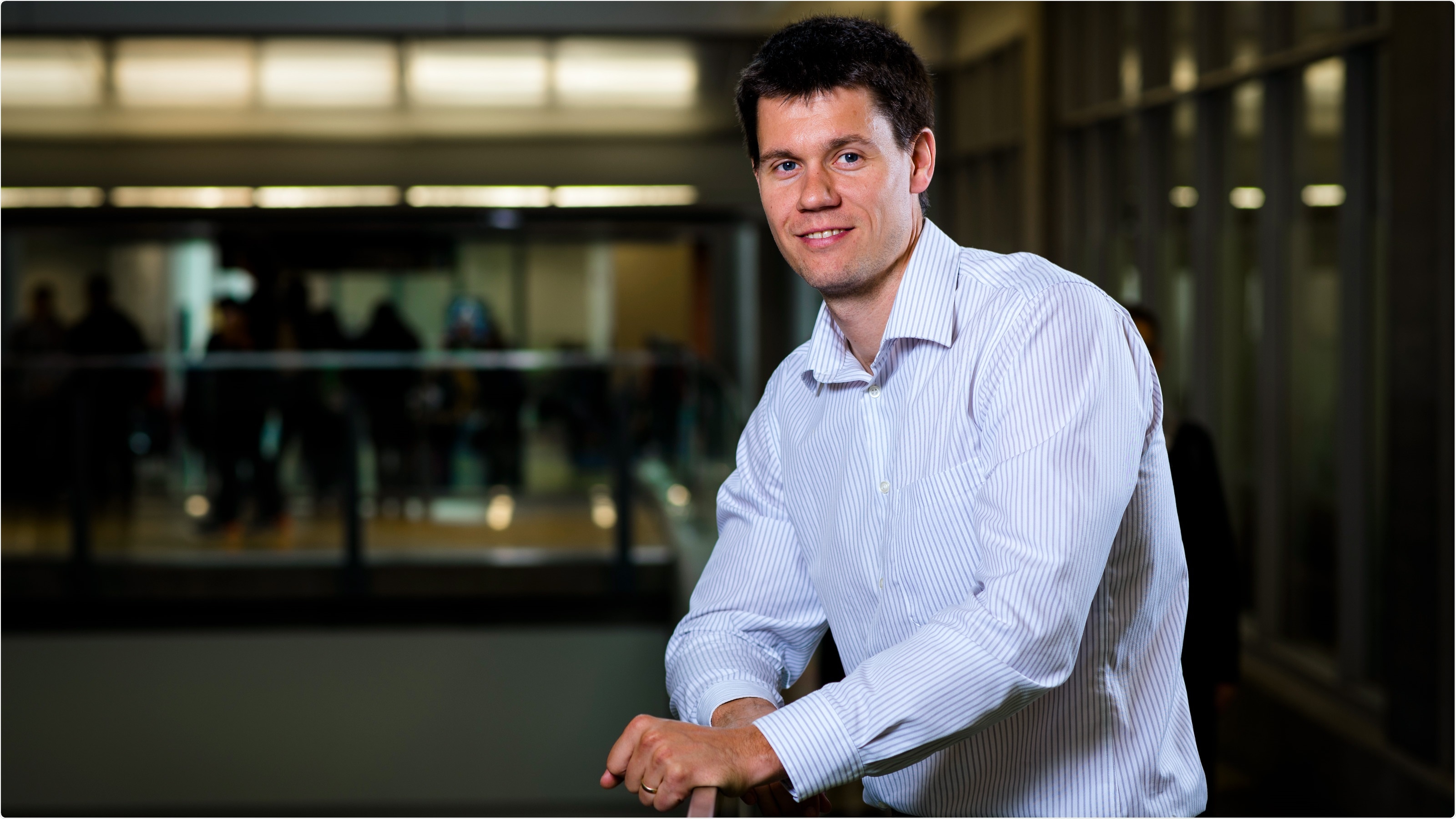University of Alberta researchers have discovered new knowledge on a cellular process in the immune system, which is a crucial step toward a deeper understanding of how antibodies develop and grow in the human body.

Chemistry professor Matthew Macauley and his research team have shed new light on how our immune systems gradually tailor antibodies to work better against infectious diseases. Image Credit: John Ulan.
To achieve optimal efficiency, the antibodies produced by our immune system must be fine-tuned. Antibodies created against vaccination or disease can defend us when they are first introduced into our systems, but they must be optimized, according to Matthew Macauley, an associate professor in the Department of Chemistry.
Slowly, our immune system improves the ability of the antibody to recognize their target, and makes them better and better.”
Matthew Macauley, Associate Professor, Department of Chemistry, University of Alberta
Antibodies improve over time by developing to attach more securely to their target, a process known as antibody affinity maturation. Mutations arise in a pseudo-random manner throughout this procedure. Then, as Macauley stated, mutations that strengthen antibodies’ capacity to detect their target are chosen in a finely coordinated set of events.
Getting to the center of how antibodies adapt
In a process known as the germinal center response, the intricate process of deciding the correct antibody takes place in the germinal center. Scientists need to understand better this critical area and the mechanism of how vaccines develop if they want to produce vaccinations that are even more powerful and lasting, according to PhD candidate Jhon Enterina, who was the study’s first author.
For the past 20 to 30 years, immunologists have employed particular carbohydrates just on the surface of white blood cells inside the germinal center as an identifying marker in their studies of the germinal center. Macauley, who studies carbohydrates as a network researcher with the pan-Canadian research network GlycoNet, was aware of this.
Macauley noted, “We began asking ourselves, do these carbohydrates have a function? They’re probably not just there for us to identify, they’re likely serving an important role.”
Antibody-producing B cells are a kind of white blood cell. B cells change into more specialized germinal center B cells when they detect a component of vaccination or pathogens. These specialized cells have a distinct collection of carbohydrate molecules on their surface. That is where Macauley saw a chance to figure out what was going on.
As the carbohydrates are changing in the germinal center into a different type, we came up with a fairly simple way to test for their function: just stop them from changing and see what happens. This was accomplished at the genetic level. Normally an enzyme gets turned off in germinal center B cells, so we simply didn’t allow the cells to turn it off.”
Matthew Macauley, Associate Professor, Department of Chemistry, University of Alberta
To keep the modifications from happening, Macauley and his colleagues devised a unique model. Researchers discovered crucial knowledge regarding the mechanisms at work in the germinal center as a result of their efforts.
Macauley added, “We connected those changes to a protein receptor called CD22 that recognizes the key carbohydrates.”
Because the germinal center cannot be investigated in a petri dish, it is particularly difficult to research. Germinal center cells die after a few hours of being removed from their native environment in the body. Furthermore, the germinal center’s cells divide at the quickest pace of any mammalian cells, even quicker than cancer cells.
According to Macauley, the reason for these cells to divide so quickly is that our systems need to generate antibodies as quickly as possible to destroy viruses before it is too late.
Many diseases, including cancer and autoimmune disorders, are caused by the germinal center losing control. However, before researchers can figure out how to manage this vital part of the body, they must first figure out how to regulate it.
We need to know what proper controls are in the first place, and are still a long way from having all the answers. It’s a very complex process. And despite all of the insights that have been made in the last 10 years, there are still many questions about the germinal center, so this is providing another insight into one of the mechanisms that control it.”
Matthew Macauley, Associate Professor, Department of Chemistry, University of Alberta
Source:
Journal reference:
Enterina, J. R., et al. (2022) Coordinated changes in glycosylation regulate the germinal center through CD22. Cell Reports. doi.org/10.1016/j.celrep.2022.110512.